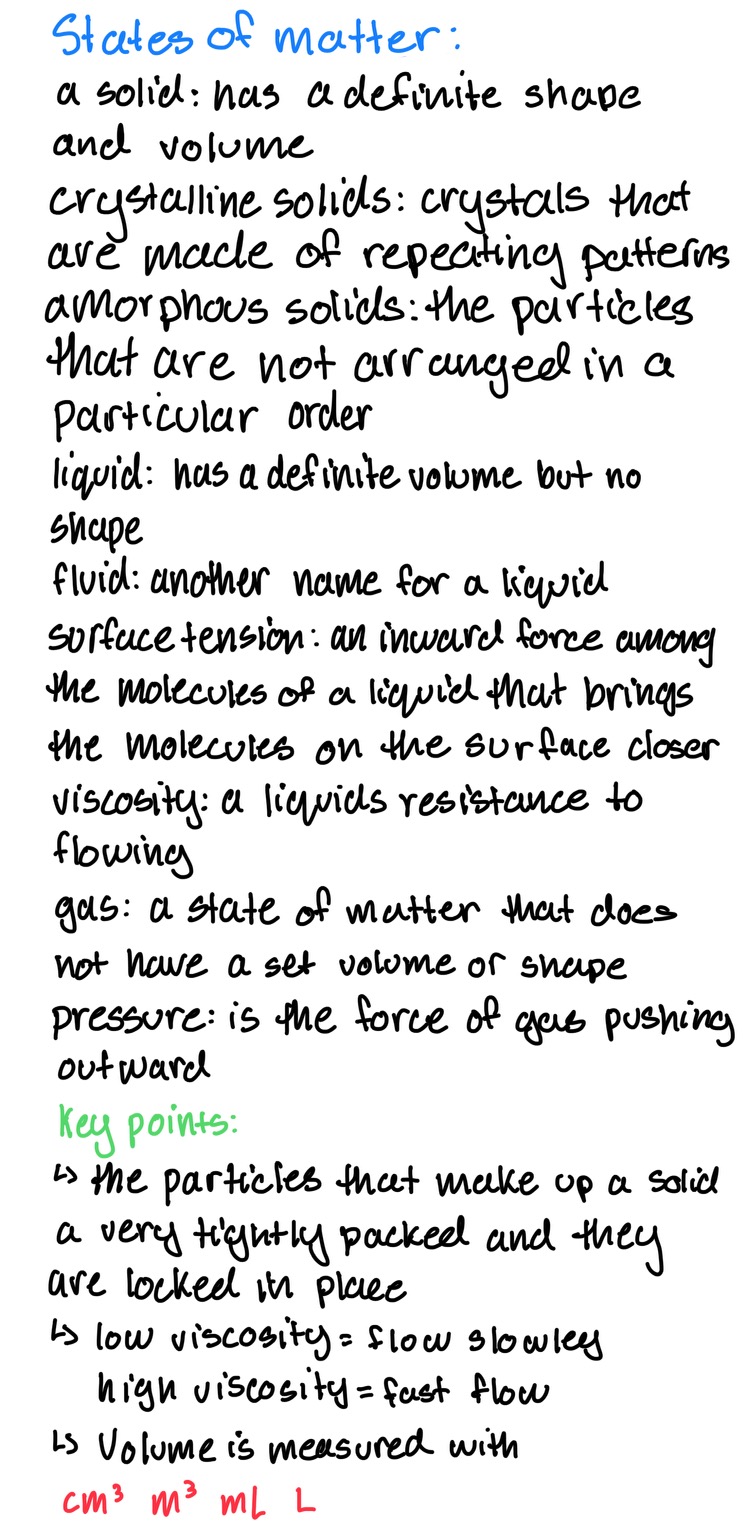Science Test
- 10 multiple-choice questions
- 1 graphing
- 3 true/false
- 3 fill in the blank
- 6 scientific notation/ standard notation
- 6 sig figs
- 2 short answers
Sig Figs
REVIEW for Unit 3: States of Matter
Test 2
Mathematical concepts:
| Scientific notation | Conversion between standard notation and scientific notation |
|---|---|
| Significant Figures | IdentificationAddition, subtraction, multiplication, division ● Why do we use significant figures? |
Scientific Concepts from Chapter 2:
| Topic | Vocabulary | Questions |
|---|---|---|
| States of MatterLesson 1 | ● Solid● Crystalline solid● Amorphous solid● Liquid● Fluid● Surface tension● Viscosity● Gas● Pressure | ● What are the different properties (and particle behavior) of solids, liquids, and gases? What are their significance and how do they influence the behavior of these different states of matter? |
| Changes in StateLesson 2 | ● Melting● Melting point● Freezing● Vaporization● Evaporation● Boiling● Boiling point● Condensation● Sublimation | ● What are the changes in state that a solid, liquid, or gas can undergo? When do those changes take place? What happens to particles during these changes? |
| Gas BehaviorLesson 3 | ● Charles’s Law● Directly proportional● Boyle’s Law● Inversely proportional● Guy Lussac’s Law | ● What are the three factors that influence gas behavior? How are they related? Which laws govern these factors? What does this relationship look like on a coordinate plane (a graph)? |
\n \n

